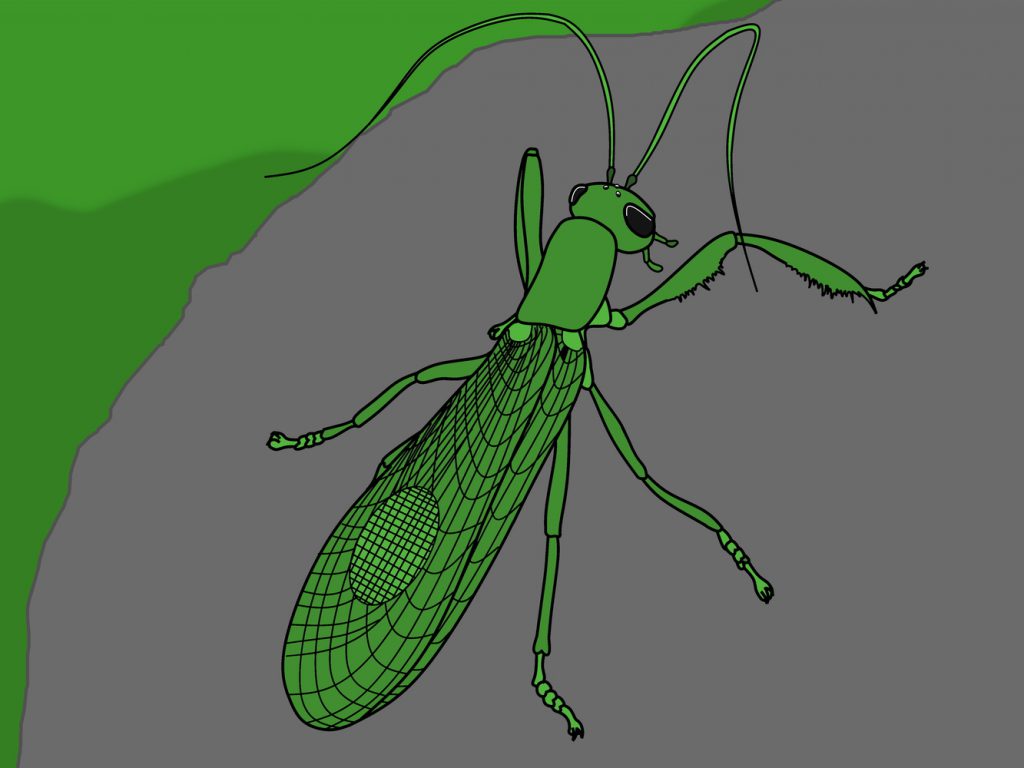
One big, loud carnivore
Closely related to grasshoppers and crickets were the Titanoptera. These insects deserved such an aw-inspiring name. They looked similar to preying mantises, but they were huge. One of the biggest was Gigatitan.
Imagine you are in the upper Triassic, in what is now Kyrgyzstan. Around you is a wet forest, full of deafening noise. Sharovipteryx, a slim archosauromorph that glided with membranes between its legs and tail, sails above you. Longisquama, a weird diapsid with huge, feathery display features on its back, isn’t the noise-maker, either. Suddenly, there is a commotion in the trees. As you watch, spiny arms manipulate a young Longisquama toward ready mandibles. Another creature has fallen to Gigatitan similus.
Gigatitan ranged in size from the smallest, G. ovatus, at a wingspan of 6 ¾ in (17cm), to the biggest, G. similis, a wingspan of up to 15 ¾ in (40cm). It caught its prey with raptorial front legs similar to that of a preying mantis, with large spikes on the inner edge. Its long legs were for running, not for jumping, and its large wings let it fly. These same wings, though, held a secret. Gigatitan’s first pair of wings had a patch of ridges, and when rubbed by the back legs, produced a deep, resonant sound. This was probably a warning noise, telling other Gigatitan to stay out of an individual’s territory, as many similar carnivorous insects have. Gigatitan was the largest insect since the Carboniferous period, and it wasn’t quiet about it.
Sources
http://fossilworks.org/bridge.pl?a=taxonInfo&taxon_no=252615 (this is the G. magnificus page. To see the other species, click on them under “sister taxa”)
